#aquatic paleontology
Explore tagged Tumblr posts
Text
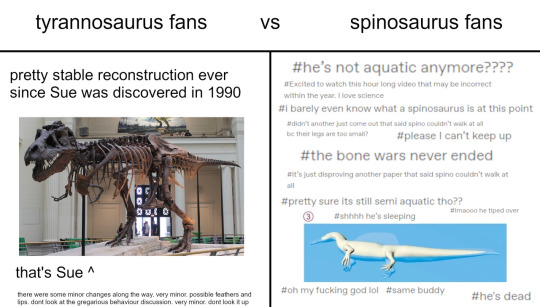
#its a repost but op said ok to repost#paleontology#tyrannosaurus#spinosaurus#aquatic paleontology#original
11K notes
·
View notes
Text
I GOT 8 PREHISOTIC PLUSHIES MOST OF THEM BEING PRE-CAMBRIAN CREATURES AND I'M SO IN LOVE
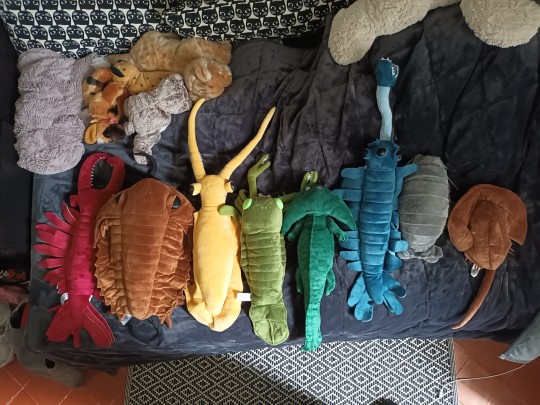
LOOK AT ANOMALOCARIS

From left to right: anomalocaris, trilobite, pteryx, pterygotus, diplocaulus, opabinia, giant isopod, horseshoe crab
(the links are in the comments)
#anomalocaris#opabinia#horseshoe crab#giant isopod#trilobite#pterygotus#pteryx#diplocaulus#pre cambrian#cambrian#cambrian explosion#prehistoric animals#aquatic paleontology#paleontology#thatlavenderblue posts
1K notes
·
View notes
Text
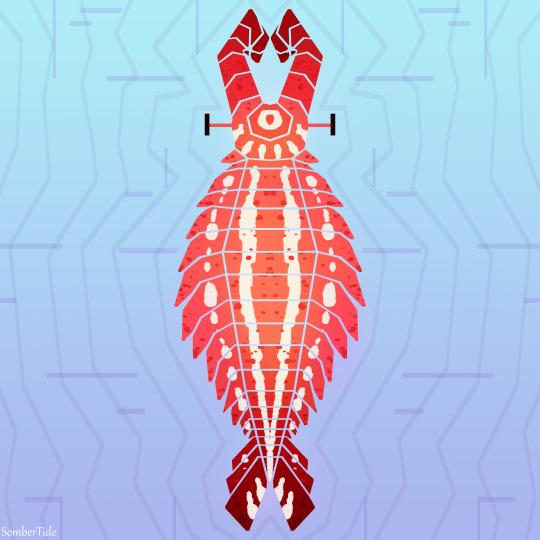
GUESS WHO'S BACK FOR DINOVEMBER BABYYYYYYYYYY
Day 1: Anomalocaris Considered by most to be the first apex predator to ever exist, they used their arms to search the sea floor for any soft bodied critters to eat!
#dinovember#art#digital art#sombertide art#paleoart#paleontology#natural history#paleo#cambrian#anomalocaris#radiodonts#aquatic animal#sea life#arthropod#arthropoda
547 notes
·
View notes
Text

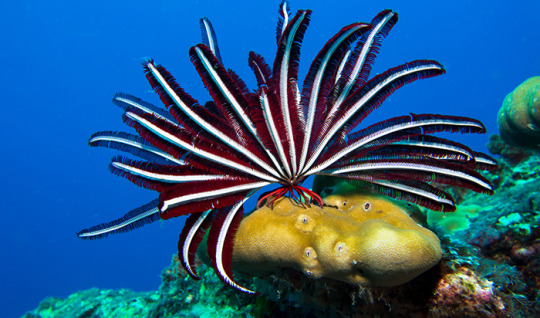
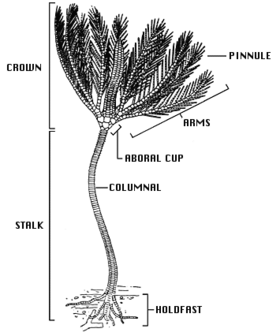
Star feathers are unique, they have high resemblance to pre-historic aquatic fauna; plants. Just like horseshoe crabs, their existence as a subset of species dates back to millenniums.
These are mobile versions of crinoids, that's a member of animalia (animal organisms), their original predecessors that came first --- the prehistoric plant-versions of crinoids that were rooted in the sea's sand as shown in the bottom figure were also animalia, but have differences in mobility. The rooted plant crinoids are among the oldest prehistoric members of lifeforms that dates back to even before the Cambrian explosion period. Fossils of crinoids are often seen in fossil marketplaces, alongside fake's, but these more recent versions of crinoids which have genetically adapted through evolution to thrive and live outside of the sand and actually swim amongst other fish, it was a characteristic often seen in the ocean's habitat.
────────────────────────────────────────────
⇾ Follow my page for more epic, silly and boomblu content; share so I can grow if you wish, and come visit my other socials at my Linktree [Just click the word Linktree, it's hyperlinked :)]. ⇽
Check out the rest of my posts too!!! A lot of them are underrated. ;o Like everything you find interesting if you want. :3 Remember, you can find all of my socials here (click the word [here], it's hyperlinked (。◕‿‿◕。) For the plain link; here it is: https://lynkfire.com/Gliphel&Glyph%20LLC%20Incorperated Also; if you prefer Linktree, it's here.
#aquatic#aquatic life#fish#fishposting#fishblr#marine#sea creatures#sea#ocean#water#ocean life#oceancore#underwater#feather star#crinoid#prehistoric#paleontology#marine life#cute animals#sea animals#dinosaur#animal#animals#organism
413 notes
·
View notes
Text

The recently described mosasaur Jormungandr walhallaensis (what a name!) surfaces to observe an unfortunate young tyrannosaur adrift on a vegetation raft
#my art#paleoart#sciart#jormungandr#walhallaensis#mosasaur#cretaceous#north america#carnivore#marine reptile#paleontology#squamata#extinct#tyrannosaur#nature#ocean#aquatic
333 notes
·
View notes
Text

stratodus. I love this giant lancetfish creature, needs more attention from paleoartists :> just look at it abhghghfh they say it’s 5 meters long that’s so cool
( source: https://www.deviantart.com/hodarinundu/art/Diving-with-Stratodus-785999958 )
31 notes
·
View notes
Text

watched a really dumb "documentary" about mosasaurs the other night and an anthro mosa demanded to be drawn to make up for it
his name is delgado and he's hot. that is all.
uncropped version elsewhere
#mosasaurus#mosasaur#anthro#dinosaur#aquatic#path of titans#delgado#paleo#paleontology#scaly#scalie#reptile#vice draws#vice's ocs#original vice
24 notes
·
View notes
Text
Fish of the Day
Today's fish of the day is the Freshwater Plesiosaur!
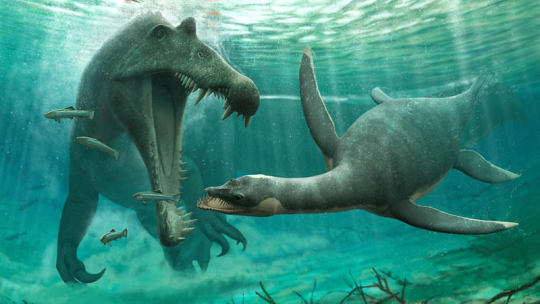
The freshwater plesiosaur was requested by Jasper, thank you Jasper! Plesiosaurus as a marine reptile, well known for their prowess as apex predators, but freshwater plesiosaurs are a relatively new idea. Based on the finding of a couple of fossils in what is now Morocco's Sahra desert river system, specifically an area called the Kem Kem beds. These fossils are scattered, showing us that this is not just the bones of one animal but a group of freshwater plesiosaurs that lived in the area, at least a dozen of them. The finding of many teeth in particular shows that these animals didn't just swim in from the ocean temporarily, but lived in the area long enough to shed teeth. This has led to some theories that the popular cryptid, The Loch Ness Monster, may be a freshwater plesiosaur, although no fossils have been yet found in that area. Although this does not confirm their existence it raises a strong argument for them. However, with limited knowledge about them for the time being, let's go over plesiosaurs in general!
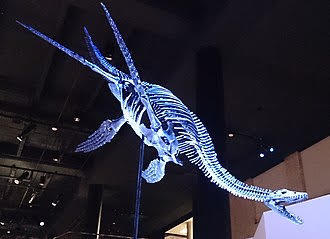
Found and named in the early 1800's the plesiosaur, from order Plesiosauria, is thought to have first appeared in the late Triassic Rhaetian stage, about 203 million years ago. These animals went extinct about 66 million years ago, to the Cretaceous-Paleocene extinction event. How they swam is still up for debate, many favor the theory that they had wide range with each of their fins, and had identical strokes, but other theories are that they may have used only the fore or hind fins for locomotion, or perhaps used them in reciprocal movement. Similar debate exists for how these animal may have dived, although we know they dived for food, as signs of decompression sickness have been found. As apex predators they ate through anything they could get close to, small fish, larger fish, sharks, cetaceans, crustaceans, one another. It is found that although they were certainly near the top of the food chain, some of them were still occasionally prey for large sharks, but mostly they fell to one another, larger plesiosauria hunting smaller. It is thought they evolved to fill the niche left open by the extinction of Ichthyosaurs, which died out in the late Cretaceous, and allowed for diversification to take place in Plesiosauria. Plesiosauria during this era evolved two distinct morphological types: the pliosauromorph build, the Pliosauroidea family, and the plesiosauromorph build, the Plesiosauroidea family.

Pliosauroidea is defined by their large heads and short necks, often compared to the build that crocodiles have. They are also known for having larger hind flippers than other plesiosaurs and can be found mostly across South America, and along the equator, although some fossils have been found as far north as Norway. The largest genus found so far, the Liopleurodon, is as large as 6 feet 5 inches, or just a little under 2 meters.

Plesiosauroidea was defined by the long skinny neck, which was used to hunt in small holes, and could move fast to snap up small marine animals nearby them. Although Plesiosauroidae is often depicted as a fast moving predator, it is found that they were likely slow swimmers, pushing their way through the water similar to the swimming methods of turtles, staying close to the surface and using their four limbs for mobility, making it easy to snap at nearby animals. Despite the common displays of them in swan-like positions, with the head raising out of the water, this is unrealistic, as they could not raise their heads up to a degree like that, and the weight of the muscles would prevent them from surfacing. The size difference between differing species was huge, as some could be only as large as 3 meters to 20 meters in length. It is currently thought that the freshwater finds belong to Plesiosauridea.
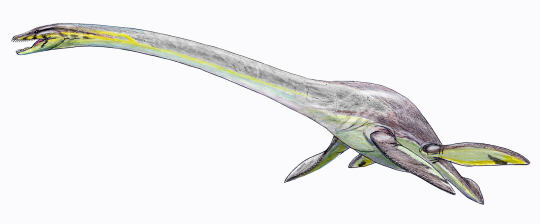
Everyone have a good day!
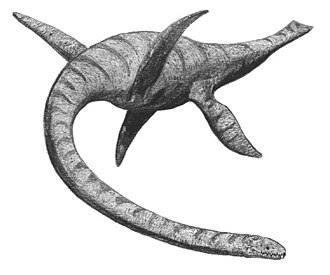
#fish#fishblr#fishes#fishposting#aquatic biology#aquatic#marine biology#ichthyology#marine animals#marine life#freshwater#freshwater fish#animal#animals#animal facts#fish of the day#information#education#nature#river#paleo#paleontology#plesiosaur#plesiosaurus#freshwater plesiosaur#Plesiosauria#Pliosauroidea#Plesiosauroidea
29 notes
·
View notes
Text
Probably not very accurate, but this is my favorite reconstruction of Terrestrisuchus, a land crocodile from the Triassic

I've been obssesed with this *design* ever since I was a kid. We COULD have little crocokitties but we were robbed.

#cosas mias#terrestrial crocodiles were A LOT more common than most people know#in fact the whole idea that crocodiles didn't really change is only true for semi-aquatic species#terrestrial crocodilians were incredibly weird and in lots of shapes#crocodiles#paleontology#triassic
50 notes
·
View notes
Text

critter
#animal art#digital art#paleontology#digital illustration#illustration#procreate#animals#creature art#paleoart#marine life#aquatic#aquatic animals#vulture culture
151 notes
·
View notes
Text
I wish I could go back to the Cambrian period.

36K notes
·
View notes
Text
youtube
So apparently it's Shark Week, or near enough.
Your routine reminder that Megalodon is definitely extinct, but you can see it in action in this animated short I made ;)
#shark week#shark#megalodon#nature#science#palaeontology#fossil#dinosaur#youtube#paleontology#prehistoric life#biology#fish#aquatic#marine#marine biology#sea creatures#Youtube
57 notes
·
View notes
Text

Day 2 of dinovember! Meet Beckwithia! I cannot find any facts about it for the life of me so i'm just gonna make some up:
Beckwithia was part of the alien mafia and have all decided to pursue their love for outer space, which is why we think it's extinct, but in reality, they're just vibing in the stars.
#art#digital art#sombertide art#paleoart#paleontology#natural history#paleo#cambrian#beckwithia#arthropod#it kinda looks like a horseshoe crab#dinovember#palaeontology#palaeoblr#aquatic animal#early life
56 notes
·
View notes
Text

A couple posts before this, I showed people a couple feather star's. As mentioned, they're a species of Crinoids. I mentioned how their species subset dates back to millenniums; but to showcase it, here's an example of a plant-based crinoid. Both the plant-based crinoids that were rooted into sand and crinoids like feather stars that evolved to swim amongst fish are both part of animalia, but one behaves like a plant and the other behaves like a mobile fish; each thriving in the same if not similar way, just more efficiently depending.
────────────────────────────────────────────
⇾ Follow my page for more epic, silly and boomblu content; share so I can grow if you wish, and come visit my other socials at my Linktree [Just click the word Linktree, it's hyperlinked :)]. ⇽
Check out the rest of my posts too!!! A lot of them are underrated. ;o Like everything you find interesting if you want. :3 Remember, you can find all of my socials here (click the word [here], it's hyperlinked (。◕‿‿◕。) For the plain link; here it is: https://lynkfire.com/Gliphel&Glyph%20LLC%20Incorperated Also; if you prefer Linktree, it's here.
#fossil#fossils#paleontology#evolution#prehistoric#prehistoric life#dinosaur#palaeoblr#marine life#marine#marine biology#aquatic#sea creatures#aquatic life#sea animals#sea life#sea#ocean#water
226 notes
·
View notes
Text
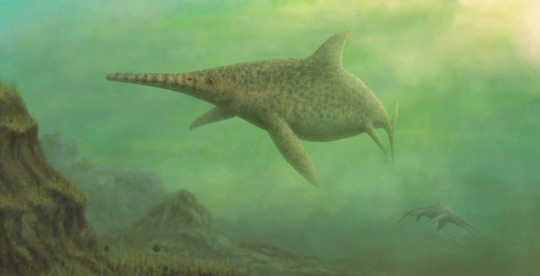
Platypterygius australis
#my art#paleoart#platypterygius#ichtyosaur#mesozoic#cretaceous#marine reptile#nature#digital art#reptile#ocean#aquatic#extinct#prehistoric#animal#paleo#paleontology
74 notes
·
View notes
Text
The first aquatic critter of the day is the Liopleurodon, an extinct genus of plesiosaur which lived from the mid to late Jurassic period! It was an apex predator during its time in the Jurassic seas that covered what is now Europe. It's name means "smooth sided tooth."


#otd#aquatic critter otd#aquatic critter of the day#🌊 otd#liopleurodon#plesiosaur#marine life#aquatic#ocean#marine biology#prehistoric#extinct animals#paleo#paleontology#jurassic#jurassic period
8 notes
·
View notes